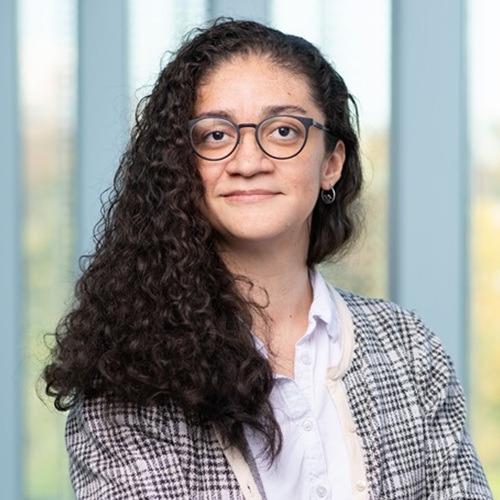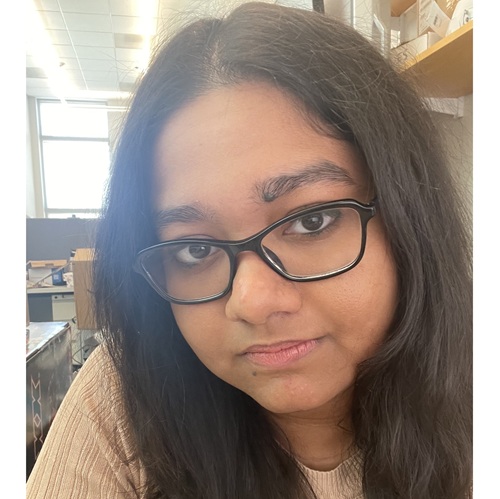| 1 |
08/25
08/27 |
• Introduction & Course Overview
+ Foundations: Vision & Language Representations
+ Connecting Vision & Language |
• Logistics. Introduction to Multimodality.
Reading materials:
+ Vaswani et al. "Attention Is All You Need"
+ Dosovitskiy et al. "An Image is Worth 16x16 Words".
+ Radford et al. "Learning Transferable Visual Models From Natural Language Supervision". |
Select Paper to Present |
| 2 |
09/01 |
Labor Day - No class |
| |
09/03 |
• Foundations & Representation Learning |
Reading materials:
+ Li et al. "Align before Fuse: Vision and Language Representation Learning"
|
Find Your Project Team Members |
| 3 |
09/08 |
+ Liu, Haotian, et al. "Visual instruction tuning."
|
|
| |
09/10 |
+ Kirillov, Alexander, et al. "Segment anything."
|
|
|
| 4 |
09/15 |
+ Siméoni, Oriane, et al. "DINOv3."
|
Guest Lecturer: Abe Leite |
|
| |
09/17 |
• Compositionality & Visual Reasoning |
+ Thrush, Tristan, et al. "Winoground: Probing vision and language models for visio-linguistic compositionality."
|
|
| 5 |
09/22 |
+ Wu, Wenshan, et al. "Mind’s Eye of LLMs: Visualization-of-Thought Elicits Spatial Reasoning in Large Language Models"
+ Li, Chengzu, et al. "Imagine while Reasoning in Space: Multimodal Visualization-of-Thought"
|
|
|
| |
09/24 |
• Domain Shift & Generalization |
+ Wortsman, Mitchell, et al. "Robust fine-tuning of zero-shot models."
|
|
|
| 6 |
09/29 |
+ Lafon, Marc, et al. "Gallop: Learning global and local prompts for vision-language models."
|
Project Proposal Due |
| |
10/01 |
+ Zhang, Yabin, et al. "Dual memory networks: A versatile adaptation approach for vision-language models."
|
|
|
| 7 |
10/06 |
• Cultural Bias & Fairness |
+ Nayak, Shravan, et al. "Benchmarking vision language models for cultural understanding."
|
|
| |
10/08 |
+ Lee, Tony, et al. "Vhelm: A holistic evaluation of vision language models."
|
|
|
| 8 |
10/13 |
Fall Break - No class |
|
10/15 |
• Embodied AI & Agents |
+ Driess, Danny, et al. "Palm-e: An embodied multimodal language model." ICML, 2023. |
|
| 9 |
10/20 |
+ Zitkovich, Brianna, et al. "Rt-2: Vision-language-action models transfer web knowledge to robotic control." Conference on Robot Learning. PMLR, 2023. |
|
|
|
10/22 |
+ Kim, Moo Jin, et al. "Openvla: An open-source vision-language-action model." CoRL, 2024. |
|
| 10 |
10/27 |
+ Wang, Weizhen, et al. "Embodied scene understanding for vision language models via metavqa." Proceedings of the Computer Vision and Pattern Recognition Conference. 2025. |
Midterm Report Due |
| |
10/29 |
• Generation & Diffusion |
+ Rombach, Robin, et al. "High-resolution image synthesis with latent diffusion models." Proceedings of the IEEE/CVF conference on computer vision and pattern recognition. 2022. |
|
| 11 |
11/03 |
+ Esser, Patrick, et al. "Scaling rectified flow transformers for high-resolution image synthesis." Forty-first international conference on machine learning. 2024. |
|
| |
/05 |
+ Polyak, Adam, et al. "Movie gen: A cast of media foundation models." arXiv preprint arXiv:2410.13720 (2024). |
|
|
| 12 |
11/10 |
+ Wu, Rundi, et al. "Cat4d: Create anything in 4d with multi-view video diffusion models." Proceedings of the Computer Vision and Pattern Recognition Conference. 2025. |
|
|
|
11/12 |
+ Normalizing Flows: Masked Autoregressive Flows (NeurIPS 17), TarFlow (ICML 25), STarFlow (NeurIPS 25) |
|
|
| 13 |
11/17 |
• World Models |
+ Yang, Mengjiao, et al. "UniSim: Learning interactive real-world simulators." ICLR, 2024 |
|
|
11/19 |
+ Bruce, Jake, et al. "Genie: Generative interactive environments." Forty-first International Conference on Machine Learning. 2024. |
|
|
| 14 |
11/24 |
+ Yu, Hong-Xing, et al. "Wonderjourney: Going from anywhere to everywhere." Proceedings of the IEEE/CVF Conference on Computer Vision and Pattern Recognition. 2024. |
|
|
| |
11/26 |
Thanksgiving Break - No class |
| 15 |
12/01 |
• Efficiency & Scaling Strategies |
+ Rajbhandari, Samyam, et al. "Zero: Memory optimizations toward training trillion parameter models." SC20: International Conference for High Performance Computing, Networking, Storage and Analysis. IEEE, 2020. |
|
| |
12/03 |
+ Dao, Tri, et al. "Flashattention: Fast and memory-efficient exact attention with io-awareness." Advances in neural information processing systems 35 (2022): 16344-16359. |
|
|
| 16 |
12/08 |
+ Dao, Tri. "Flashattention-2: Faster attention with better parallelism and work partitioning." arXiv preprint arXiv:2307.08691 (2023). |
|
| |
12/10 |
• Finals |
Final Project Presentation |
Final Project Report & Code Due |

